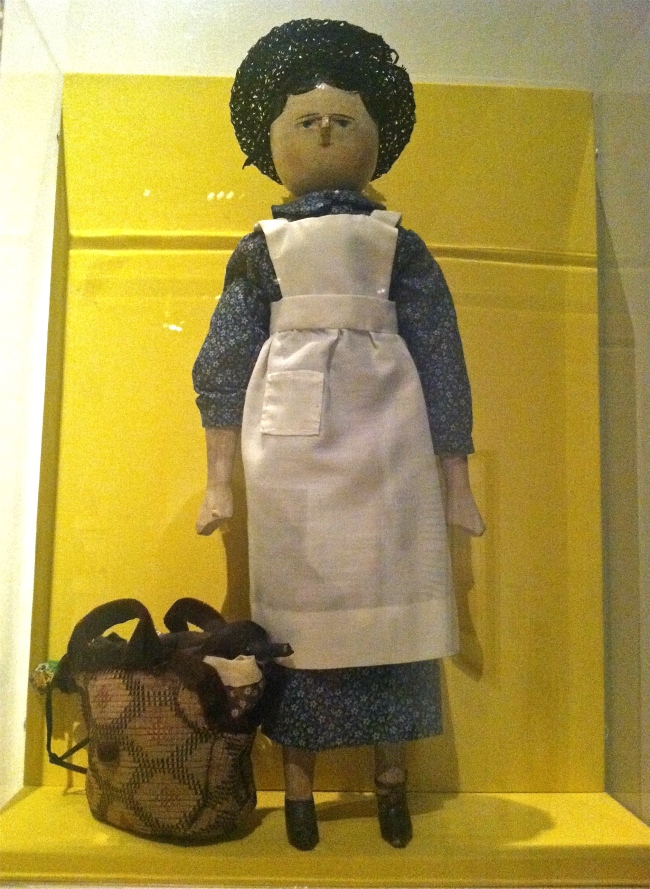Tags
Across Five Aprils, Bobbsey Twins, Books of Ages, Childhood Reading, Edith Hamilton's Mythology, Five Little Peppers, Johnny Tremain, Little Men, Little Women, Lois Lenski, Mary Poppins, On to Oregon!, Winnie-the-Pooh
Jane Franklin’s Book of Ages (see my previous post) reminded me, in my role as LW’s biblio-biographer, of another Book of Ages that, unfortunately, did not survive LW’s adolescence. In a pique of embarrassment, teenaged LW threw out her own Book of Ages, along with her hormonally-driven five year diary and other juvenilia. This was probably smart of her in case she should ever run for office, but I remember the book fondly, as my development into a well-stocked library owes something to it.
When LW was ten years old, she had a love-hate relationship with her local public library. She loved to borrow its books, and she hated to return them. Library fines bit deeply into her scavenged movie and candy funds. When she finished a book she liked, she closed it in dismay–She wished the story could go on and on. Given that she had to return the book, she wanted to keep its characters close so as to continue their stories in her mind.
So she created her own version of a Book of Ages. In one of those stitched composition books with the granite-like pattern on the cover, she wrote down the names of favorite characters and their ages from a time of her choosing. Sometimes she drew the characters’ portraits as well, usually in profile. She mastered the old “smaller curve atop a larger curve with an eyelash in the middle” style of silhouette immortalized by Alfred Hitchcock’s famous profile. It looked something like this:
This was a difficult time in LW’s life. Her parents had divorced. Her oldest sister had moved out of state. When her mother married a gruff former ship captain, he moved them to another town, away from friends and family, including her other sister who stayed behind. Perhaps this is why many of the names LW recorded in her book of ages were siblings from large, close families.
From what I can recall, her reading from those years (the early sixties) consisted of mostly standard fare somewhat dated for the time. Her first entries into her book included balanced but bland Bobbsey Twins (Bert and Nan, Freddie and Flossie) and the antique Five Little Peppers (Ben, Polly, Joel, Davie and Phronsie), hangers-on from her earliest chapter-book days. The Little Women–Meg, Jo, Amy and Beth–lived on in her Book of Ages (Beth having somehow staged a miraculous comeback), as did the generation that followed in Little Men. And she included the Banks children from her beloved Mary Poppins books. [Show below: the Dutch doll from which P.L. Travers modeled Mary Poppins, displayed at a recent NYPL exhibit.]
She was particularly fond of the siblings in historical novels such as Johnny Tremain, On to Oregon!, and Across Five Aprils. And she recorded her favorite characters from the series of books by Lois Lenski that featured lower class families from distinct regions and cultures of the country. She could relate. (I have acquired a number of Lenski’s books over the years, and they are all beat-up library books. Before the Scholastic book services was introduced into classrooms selling cheap paperbacks, few kids from her day had many books of their own.)
LW also loved anthropomorphic animal stories. Her most extensive character lists were drawn from the Thornton Burgess nature series, some early Richard Scarry-illustrated books, and the Winnie-the-Pooh books that were her secret indulgence. [Below: the original Winnie and friends, also from the NYPL, with photo of author A.A. Milne and son.]
Other long lists were inspired by the movie Fantasia. She became obsessed with Greek and Roman mythology, particularly the intricate relationships among the Gods and demi-Gods. She charted the genealogies of the Olympians, mostly procured from her paperback of Edith Hamilton’s Mythology, along with their powers, totems, and personality traits. She went on to construct her own pantheons as well.
At some point she decided to make up stories about people in her own extended family, people who had been left behind. She knew her mother grew up in the country with her four sisters, and that her father had grown up in town with seven sisters and two brothers. She asked her mother for a list of her aunts’ and uncles’ birthdays and was given some family records. Like a latter-day Jane Franklin, she recorded the birthdays in her book. She then computed their ages for the setting of her stories. She set her father’s age at fourteen so as to be able to include his youngest sister into her stories.
As she poured over the lists her mother gave her, she discovered other lists—her grandparents’ siblings, parents, and more. She was shocked to realize that just a generation away, she knew of only a few of these relatives. How was it that a family, even a close family, could so quickly become lost to one another and to time?
And so, like Jane Franklin, she became something of an archivist, collecting names and stories. And books, many books. Books of ages. Books of her own. My current existence as a Library of Sagging Shelves [L.O.S.S.?] grew out of this original collecting impulse: to save and remember the names of those left behind and their stories. And to create a library where the books don’t have to be returned.






Ok so not knowing my own family history , I enjoyed reading about how LW was taken up with finding out as much as she could about her own .
This entry of LWs was great to to read over my morning cup of joe.
Thank you for sharing LW . Sent from the sidewalk
>
Thanks. And it’s never too late to start your search.